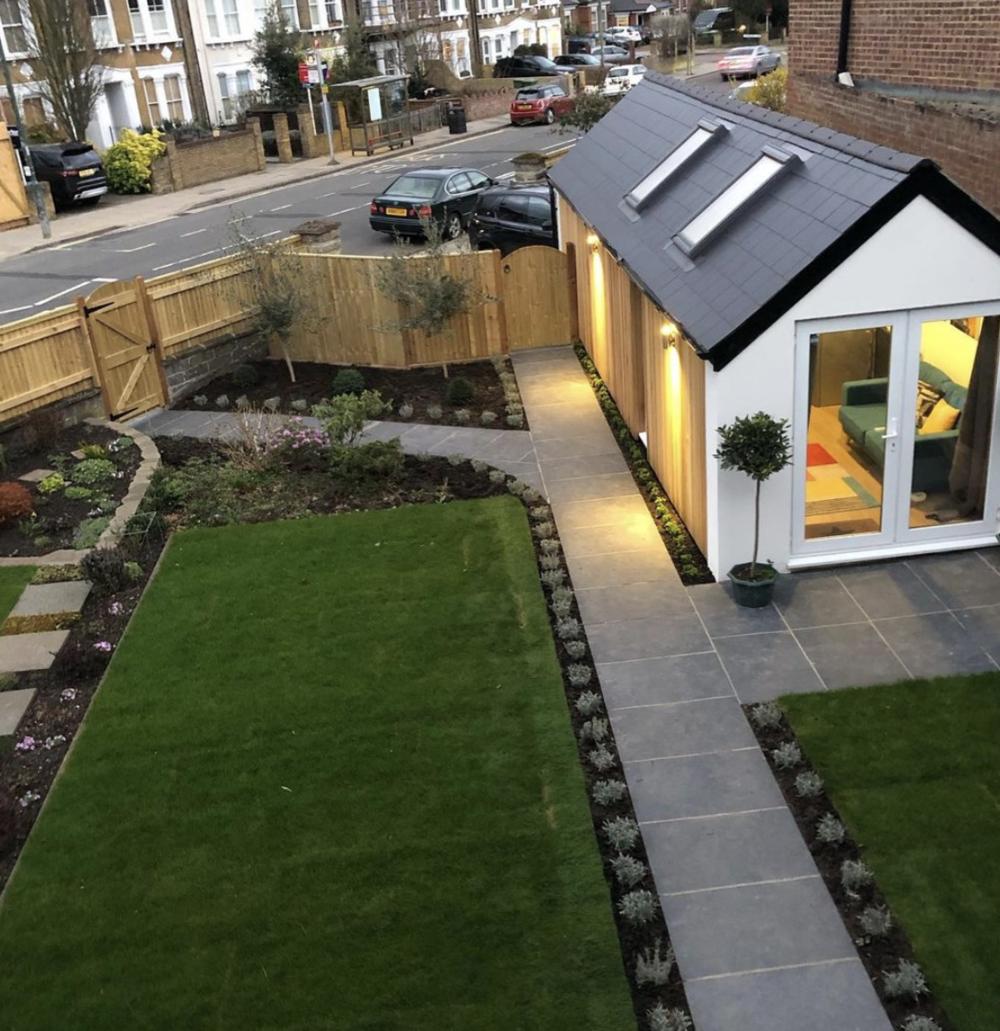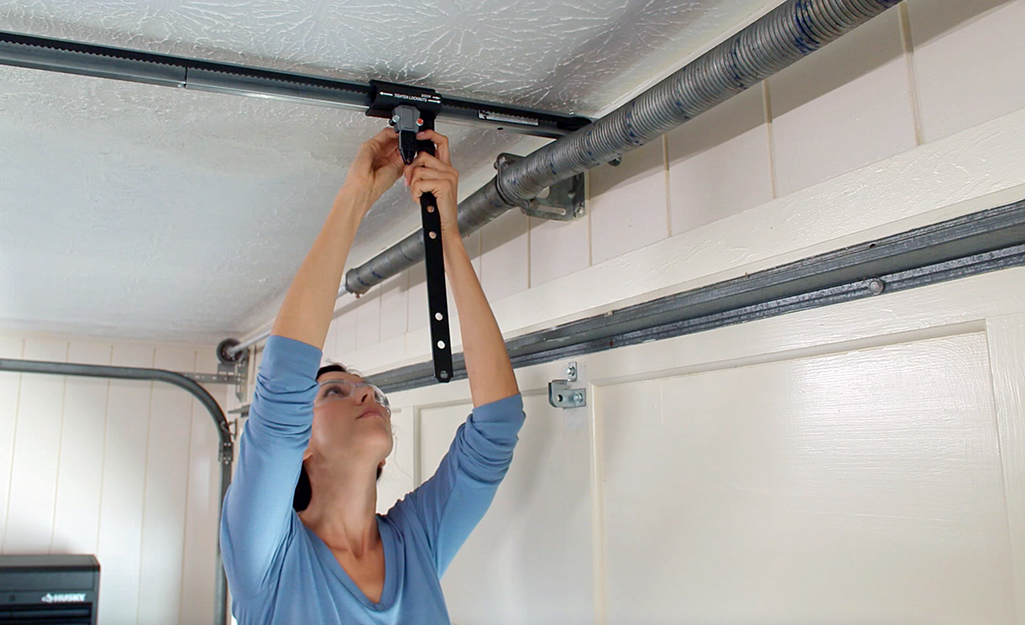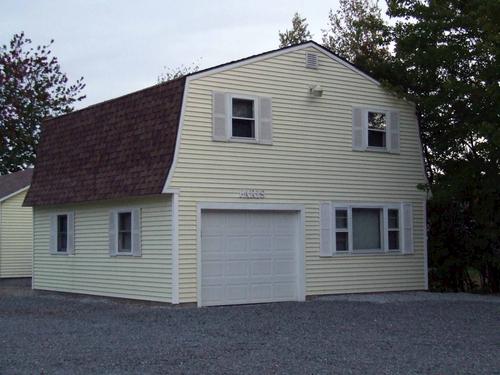
You're in the right place if you are thinking of installing a garage door. A new door can make your home look better, save you money, and improve your comfort. You have to make the right choice for your home. These are some things to keep in mind when you start looking.
The first thing you need to do is decide which garage door will work best for your home. This will depend on where and how often you use the garage. You can choose from sectional, tip-up, and side panels garage doors. Each type of garage door has its benefits and drawbacks.
Sectional doors, for example, are usually made from metal and typically have three to eight panels. These panels slide down and up along the garage door rail. In addition to providing a smooth finish, these doors also allow homeowners to customize their door's appearance. They are available in many colors and styles.

Accessories such as remote controls and light bulbs can be added to the rail. Some manufacturers even offer adjustable rails. The cost of these add-ons could impact how much you are willing to spend on a new front door.
Insulation is another important consideration when installing a garage doors. Insulation is a great way to reduce the cold air in your garage and keep your indoor temperatures controlled. The R-value of insulation should be high enough to make an impact on your home.
A professional is recommended to install a garage door. The professionals will follow the industry standards for safety and ensure that all components are properly installed. Also, they'll use heavy-duty parts to prolong the life of your system.
It's also a good idea to get the best garage door you can afford. Your budget and your plans for styling your garage will determine which option is best. You also want to make sure that the door fits well with your home's interior and architecture.

Smart openers are also smart. You can open and close your doors with the new models that come with sensors. Some models also come with optional accessories like keypads and an electric eye. Before you buy your new opener, be sure to consult your local dealer.
Smart garage doors will come with a pulley, belt and a handle to prevent them from closing. You can choose from a variety of sizes and materials for the belt.
Finally, it's a good idea to get a professional to install your new opener. This will ensure that your garage door is securely installed. It also protects you from injury if the spring fails. While DIY is a great way to save money, it can also pose risks that can prove costly.
FAQ
What is included in a full-scale kitchen remodel?
A kitchen remodel includes more than a new faucet and sink. You will also need cabinets, countertops and appliances as well as lighting fixtures, flooring, plumbing fixtures, and other items.
A complete kitchen remodel allows homeowners the opportunity to upgrade their kitchens without any major construction. The contractor and homeowner will be able to do the job without any demolition, which makes the project much easier.
Kitchen renovations include various services, including electrical, plumbing, HVAC, carpentry, painting, and drywall installation. Complete kitchen remodeling may require multiple contractors, depending on how extensive the renovation is.
Professionals with years of experience working together are the best way ensure a successful kitchen remodel. Kitchen remodels often involve many moving parts, and small issues can cause delays. If you choose a DIY approach, make sure you plan and have a backup plan in place in case things go wrong.
Remodeling a kitchen or bathroom is more expensive.
Remodeling a bathroom or kitchen can be expensive. However, when you consider how much money you pay each month for energy bills, upgrading your home might make more sense.
You could save thousands each year by making a small upgrade. A few easy changes like adding insulation to ceilings or walls can reduce heating/cooling costs by as much as 30%. Even a modest addition can improve comfort and increase resale value.
Remember to choose durable and easy-to maintain products when you are planning your renovations. The durability and ease of maintenance that porcelain tile and stainless steel appliances offer over vinyl and laminate countertops is why solid wood flooring and porcelain tile are so much better.
Altering old fixtures can also help reduce utility bills. Installing low-flow faucets or showerheads can cut water use by up to 50%. Compact fluorescent bulbs can be replaced with inefficient lighting to reduce electricity consumption by as much as 75 percent.
How much would it cost to gut a home vs. how much it cost to build a new one?
Gutting a home removes everything inside a building, including walls, floors, ceilings, plumbing, electrical wiring, appliances, fixtures, etc. Gutting is done when you want to make some modifications before moving in. Gutting a home is typically very expensive because so many things are involved in doing this work. Depending on your job, the average cost to gut a home can run from $10,000 to $20,000.
Building a home is where a builder builds a house frame by frame, then adds walls, flooring, roofing, windows, doors, cabinets, countertops, bathrooms, etc. This is often done after purchasing lots of land. Building a home can be cheaper than gutting. It usually costs around $15,000-$30,000.
It comes down to your needs and what you are looking to do with the space. You'll likely need to spend more money if you want to gut a property. You don't need to take everything apart or redo everything if you are building a home. You can design it yourself, rather than waiting for someone else.
How much is it to renovate and gut a whole kitchen?
You might wonder how much it would be to remodel your home if you have been considering the idea.
The average cost of a kitchen remodel between $10,000 and $15,000. You can still save money on your kitchen remodel and make it look better.
Plan ahead to save money. You can do this by choosing a design style that suits you and your budget.
A skilled contractor is another way to reduce costs. A skilled tradesman will know exactly what to do with each stage of the construction process. This means that he or she won’t waste time trying out different methods.
You should consider whether to replace or keep existing appliances. Remodeling a kitchen can add thousands of pounds to its total cost.
You might also consider buying used appliances over new ones. Because you don't need to pay for installation, buying used appliances can help you save some money.
Shopping around for fixtures and materials can help you save money. Many stores offer discounts during special events, such as Black Friday or Cyber Monday.
In what order should you renovate a house?
First, the roof. The plumbing follows. Third, the wiring. Fourth, the walls. Fifth, the floors. Sixth, the windows. Seventh, the doors. Eighth, is the kitchen. Ninth, bathrooms. Tenth is the garage.
Finally, after all this work is done, you'll have everything you need to get into the attic.
Hire someone to help you if you don't have the skills necessary to renovate your home. Renovating your own house takes time, effort, and patience. You will also need to spend money. So if you don't feel like putting in the hours or the money, then why not let someone else do the hard work for you?
Although renovations are not cheap, they can save you a lot of money in the end. A beautiful home can make your life easier.
Why should I remodel rather than buying a completely new house?
It's true that houses get cheaper yearly, but you're still paying for the same square footage. You will pay more for the extra square footage, even though you might get more bang for you buck.
Maintaining a house that doesn’t need much maintenance is cheaper.
You can save thousands by remodeling your existing home rather than buying a completely new one.
Remodeling your home can make it more comfortable and suit your needs. Your home can be made more comfortable for your family.
Statistics
- About 33 percent of people report renovating their primary bedroom to increase livability and overall function. (rocketmortgage.com)
- 57%Low-end average cost: $26,214Additional home value: $18,927Return on investment: (rocketmortgage.com)
- 55%Universal average cost: $38,813Additional home value: $22,475Return on investment: 58%Mid-range average cost: $24,424Additional home value: $14,671Return on investment: (rocketmortgage.com)
- 5%Roof2 – 4%Standard Bedroom1 – 3% (rocketmortgage.com)
- Attic or basement 10 – 15% (rocketmortgage.com)
External Links
How To
How can you plan a bathroom without breaking the bank?
It is important to be able to afford any remodeling project. It is impossible to expect to pay it off later if it is not possible for you now.
A bathroom renovation requires careful planning and an understanding of the costs involved. It is not cheap to remodel a bathroom.
Labor costs are one of your biggest expenses. Labor costs vary depending on the size of the job and whether you hire a professional contractor or a DIYer. Because of their expertise and experience, professionals usually charge more than DIYers for an hour.
Another big expense is materials. Prices per square foot can vary depending upon the type of material.
Last but not least, let's not forget about the cost of energy. This includes both your electricity and gas bills. Peak demand periods are when energy costs can rise.
It is also important to think about the time needed to complete the job. Bathroom renovations can take a lot time and patience. While some projects can be completed in weeks, others can take up to months.
Other than these three main categories, smaller items such paint, wallpaper, and flooring can add to the project’s overall cost.
To help you determine the best way to approach your bathroom remodeling project, here are some tips to keep in mind:
-
Determine your budget - Before beginning any remodeling project you need to know what you can afford. It doesn't matter if you think you can afford it or not. You need to have a realistic budget in order to know where you stand financially.
-
Plan Ahead - If possible, try to schedule your bathroom remodel for the off-season. Winter months are known for having lower energy consumption, so you can save on cooling and heating costs. Even better, consider scheduling your remodel during the night when less people are using the restroom.
-
Shopping around - Once you've established your budget, start looking at potential vendors. You have many options, including local shops, online retailers and even family members who are willing to collaborate on your project.
-
Choose An Estimator - Once you have identified all your potential vendors, you should contact each individually to get estimates. It is important to get multiple quotes in order to receive the most competitive pricing.
-
Get Multiple Estimates. After you receive your initial estimates, it is important to compare them with each other to determine which vendor has the lowest price. Once you have found this vendor, you should ask them to provide you with a written estimate.
-
Be sure to include all costs - Include everything you will spend on the project when you prepare an estimate. Make sure to include all fees and taxes that might apply in your area.
-
Don't Neglect Small Details - While planning your bathroom remodel, you should also pay attention to small details. Is it necessary to replace the toilet? Is there space for a curtain rod to hang from the shower? These changes can easily increase the total amount spent on the project.
-
Consider Insurance - Depending on the scope of your bathroom remodel, it is important to check with your insurance company to make sure you have adequate coverage. You could end up paying more if you don't.
-
Hire a Professional - Once your bathroom remodel is complete, you should always hire a professional to put in the final fixtures. Although you may be capable of doing the job yourself it is easier to hire someone to do it correctly.